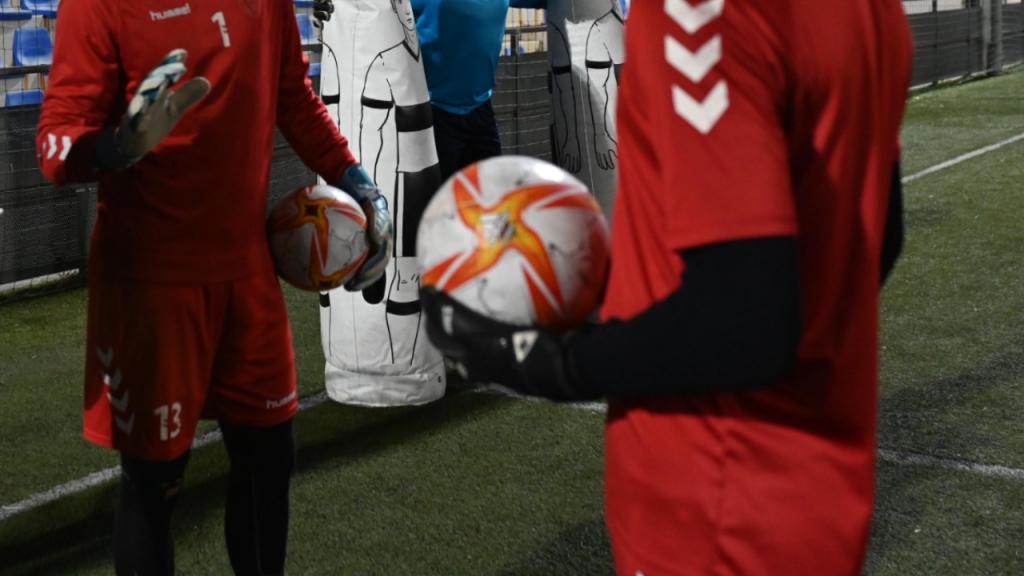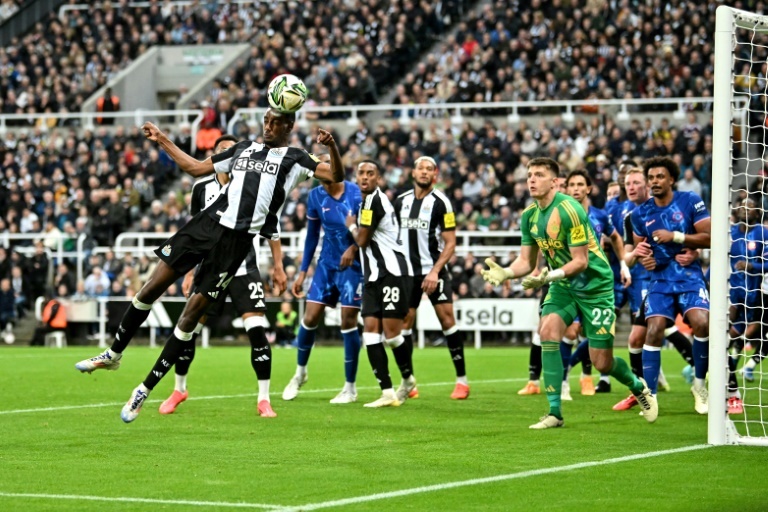The Science Behind the Perfect Free Kick: Techniques Used by Football Legends

Discover the physics behind the perfect free kick in football. Discover renowned players' techniques that shaped the beautiful game.
1 year ago
Players of the caliber of Lionel Messi and Cristiano Ronaldo are revered all around the globe for their mastery of the art of the free kick. The ability to take effective free kicks is an essential component of the modern game. Examples of effective free kicks include a piledriver and a curler into the top corner. But what exactly does science have to do with making a goal?
The Magnus effect will serve as the guiding concept. This principle of physics, which was investigated by the German physicist Heinrich Gustav Magnus, indicates that airflow is altered in a certain manner around any spinning cylinder or sphere.
If the ball is rotating counterclockwise, the side that is moving in the same direction as the airflow, which is to the left, will experience less drag than the side that is spinning against the onrushing air, which is to the right, which will increase the amount of drag. This results in an uneven distribution of pressure throughout the ball, with the right side experiencing higher pressure than the left side and the left side experiencing lower pressure. Because of this imbalance, the ball is forced to migrate to an area where there is less pressure, which causes it to curl to the left.
But taking free kicks in the manner that Cristiano Ronaldo does is an entirely different ball game. The key to executing an extremely powerful and deceptive free kick is to give it as little spin as possible. When air moves over a ball, a boundary layer is formed. This layer is a cushion of air that adheres very firmly to the ball's surface and is created as the air moves over the ball. If an imperfection in the ball disrupts this airflow, then the ball will deviate while it is in the air.
A ball that is hit on its surface will deviate more than one that is spinning quickly because the latter will have more opportunity to move in the direction of the disturbance caused by the former. Therefore, when Ronaldo hits the ball with little spin, any tiny fault in the football will cause it to move during flight and outfox many bad goalkeepers who are confused. After a football match, you can delve into the casino by using casino promotion that does not require you to make a deposit to try out your luck.
With this fundamental knowledge of physics, we can move on to the main attraction, the Magnus effect. This phenomenon explains how players can curve the ball into the goal post during a free kick. When a soccer ball is in motion through the air, the air begins to assume to control the ball's movement and bends it according to its preferences. This causes the ball to move in a curved path.
When the kicker first makes contact with the ball, he or she is expected to impart some spin on it before striking it. In a nutshell, the top spin of the ball slows the air movement around the top of the ball relative to the air movement around the bottom half of the ball. The tangential velocity of the ball in the top half of its trajectory goes in the opposite direction of the airflow. In contrast, the tangential velocity of the ball in the bottom half of its trajectory goes in the same direction as the airflow.
Because of this imbalance, more force is acting upon the ball at its highest point. As the ball slows down, the Magnus effect becomes more pronounced. This is because, at some point, the airflow traveling in the opposite direction of the spin will stop. The pressure imbalance is exacerbated, which results in the creation of a force that operates on the ball and pushes it downward while also acting against the side of the ball that was previously responsible for producing an opposing airflow. When a soccer player kicks the ball in a direction that causes it to spin counter-clockwise, the Magnus force acts on the ball in the opposite direction, causing it to curve to the left (and vice versa).
Because the Magnus effect grows stronger as velocity gets lower, you'll observe the curve in the ball happening much more quickly as it starts to make its way back down toward the ground. This is because the Magnus effect gets stronger as velocity gets weaker. As the ball travels in the air, the curve becomes increasingly acute, preventing the goalie and other nearby defensive players from accurately tracking it as it falls downward. You can construct a free kick that appears to have its own life and mind if you use the exact amount of force necessary to ensure that the ball will make its way downward into the net at the appropriate time.
These strategies, ranging from the mechanics of ball trajectory to mental fortitude, have been honed by legendary athletes. Whether you're a player, a fan, or just someone curious about the game, having a deeper appreciation for the pitch's mastery can come from having a better understanding of the science behind the perfect free kick. It demonstrates the beauty of football, which is created when art and science collaborate to produce breathtaking moments.
The Magnus effect will serve as the guiding concept. This principle of physics, which was investigated by the German physicist Heinrich Gustav Magnus, indicates that airflow is altered in a certain manner around any spinning cylinder or sphere.
If the ball is rotating counterclockwise, the side that is moving in the same direction as the airflow, which is to the left, will experience less drag than the side that is spinning against the onrushing air, which is to the right, which will increase the amount of drag. This results in an uneven distribution of pressure throughout the ball, with the right side experiencing higher pressure than the left side and the left side experiencing lower pressure. Because of this imbalance, the ball is forced to migrate to an area where there is less pressure, which causes it to curl to the left.
But taking free kicks in the manner that Cristiano Ronaldo does is an entirely different ball game. The key to executing an extremely powerful and deceptive free kick is to give it as little spin as possible. When air moves over a ball, a boundary layer is formed. This layer is a cushion of air that adheres very firmly to the ball's surface and is created as the air moves over the ball. If an imperfection in the ball disrupts this airflow, then the ball will deviate while it is in the air.
A ball that is hit on its surface will deviate more than one that is spinning quickly because the latter will have more opportunity to move in the direction of the disturbance caused by the former. Therefore, when Ronaldo hits the ball with little spin, any tiny fault in the football will cause it to move during flight and outfox many bad goalkeepers who are confused. After a football match, you can delve into the casino by using casino promotion that does not require you to make a deposit to try out your luck.
With this fundamental knowledge of physics, we can move on to the main attraction, the Magnus effect. This phenomenon explains how players can curve the ball into the goal post during a free kick. When a soccer ball is in motion through the air, the air begins to assume to control the ball's movement and bends it according to its preferences. This causes the ball to move in a curved path.
When the kicker first makes contact with the ball, he or she is expected to impart some spin on it before striking it. In a nutshell, the top spin of the ball slows the air movement around the top of the ball relative to the air movement around the bottom half of the ball. The tangential velocity of the ball in the top half of its trajectory goes in the opposite direction of the airflow. In contrast, the tangential velocity of the ball in the bottom half of its trajectory goes in the same direction as the airflow.
Because of this imbalance, more force is acting upon the ball at its highest point. As the ball slows down, the Magnus effect becomes more pronounced. This is because, at some point, the airflow traveling in the opposite direction of the spin will stop. The pressure imbalance is exacerbated, which results in the creation of a force that operates on the ball and pushes it downward while also acting against the side of the ball that was previously responsible for producing an opposing airflow. When a soccer player kicks the ball in a direction that causes it to spin counter-clockwise, the Magnus force acts on the ball in the opposite direction, causing it to curve to the left (and vice versa).
Because the Magnus effect grows stronger as velocity gets lower, you'll observe the curve in the ball happening much more quickly as it starts to make its way back down toward the ground. This is because the Magnus effect gets stronger as velocity gets weaker. As the ball travels in the air, the curve becomes increasingly acute, preventing the goalie and other nearby defensive players from accurately tracking it as it falls downward. You can construct a free kick that appears to have its own life and mind if you use the exact amount of force necessary to ensure that the ball will make its way downward into the net at the appropriate time.
These strategies, ranging from the mechanics of ball trajectory to mental fortitude, have been honed by legendary athletes. Whether you're a player, a fan, or just someone curious about the game, having a deeper appreciation for the pitch's mastery can come from having a better understanding of the science behind the perfect free kick. It demonstrates the beauty of football, which is created when art and science collaborate to produce breathtaking moments.







Comments